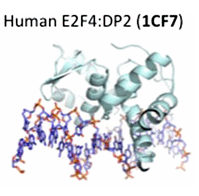
Despite the fact that modern biotechnology makes it possible to determine the entire DNA sequence for each individual patient, the major part of such information is currently unusable due to the fact that the functional significance of over 95% of the DNA sequence is not understood. One of the most striking features of genomic DNA is that it contains numerous repetitive sequence patterns of unknown function. However, BGU researchers and their colleagues from Duke University have identified a possible function of such repetitive DNA patterns; they have discovered that these patterns enhance the binding of regulatory proteins to DNA.
Genetic information is encoded into a long DNA molecule, containing billions of elementary building blocks, which are termed “nucleotide bases”. There are four types of such nucleotide bases, abbreviated A, T, C, and G, and a genomic DNA molecule represents a long double-stranded chain composed of these nucleotides. Alterations in the sequence of a genomic DNA molecule, which are called mutations, are responsible for numerous genetic disorders in both children and adults.
Understanding molecular mechanisms of how regulatory proteins, called transcription factors, recognize their specific binding sites encoded into genomic DNA represents one of the central, long-standing problems of molecular biology.Until now, it has reasonably been assumed that specific base-pair recognition is the only mechanism controlling the specificity of transcription factor-DNA binding.
Contrary to this assumption, a series of experiments by Dr. David B. Lukatsky and Ariel Afek of BGU’s Department of Chemistry and Raluca Gordân, Joshua L. Schipper, and John Horton of the Center for Genomic and Computational Biology, Department of Biostatistics and Bioinformatics, Duke University, reported on the front cover of PNAS, demonstrate that a DNA context characterized by certain repetitive sequence patterns surrounding specific binding sites, significantly influences protein-DNA
binding specificity. In particular, the team measured the binding of the human regulatory protein c-Myc to genomic DNA. This protein is involved in numerous human cancers. Their discovery shows that the presence of repetitive DNA patterns can alleviate the harmful effect of mutations on protein-DNA binding.
“We expect that our results will significantly impact the understanding of molecular, biophysical principles of transcriptional regulation, and significantly improve our ability to predict how variations in DNA sequences, i.e. mutations, influence gene expression programs in living cells,” says Lukatsky.
